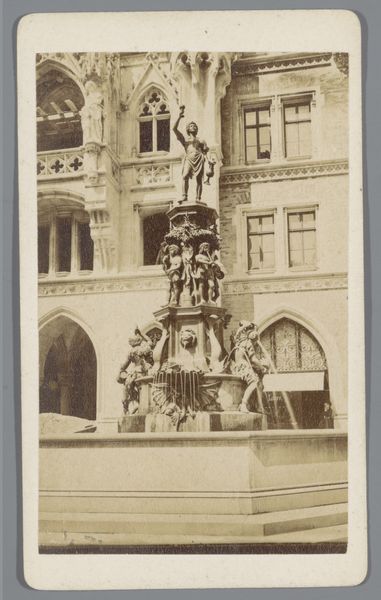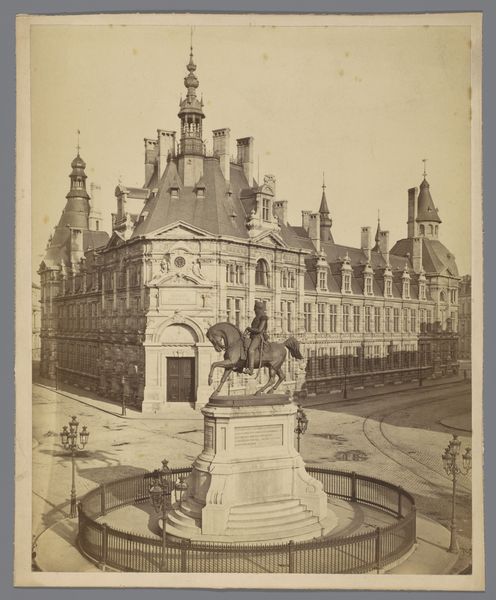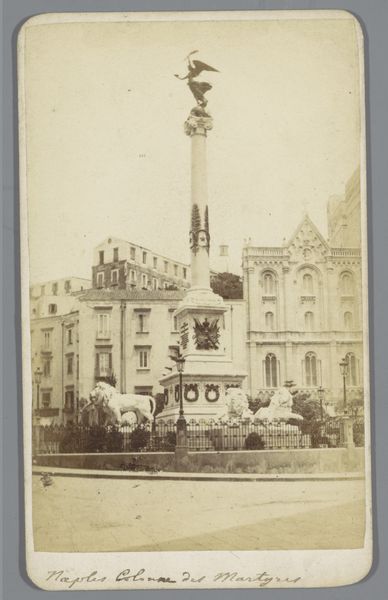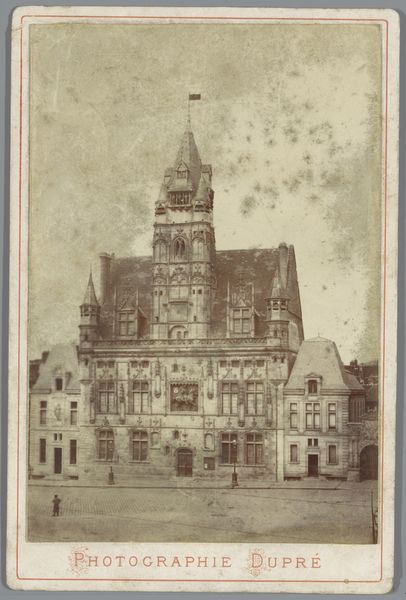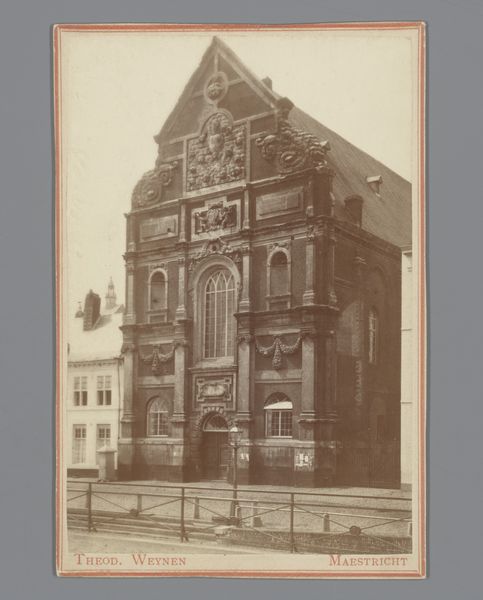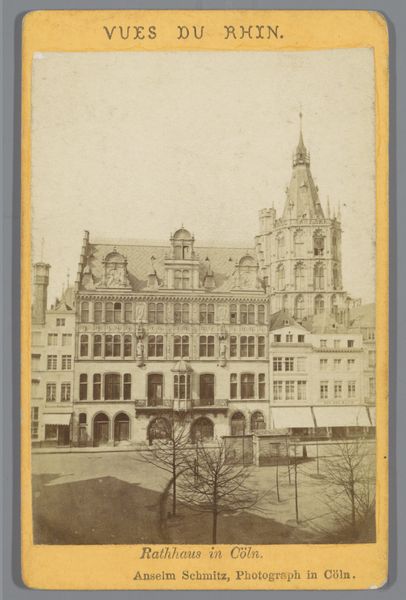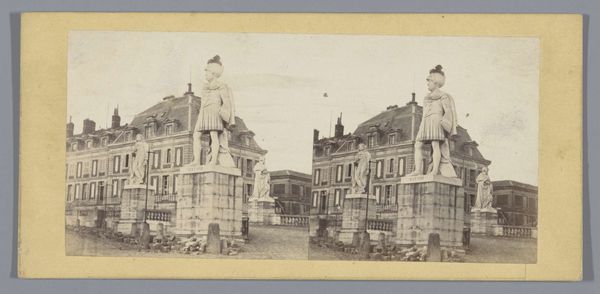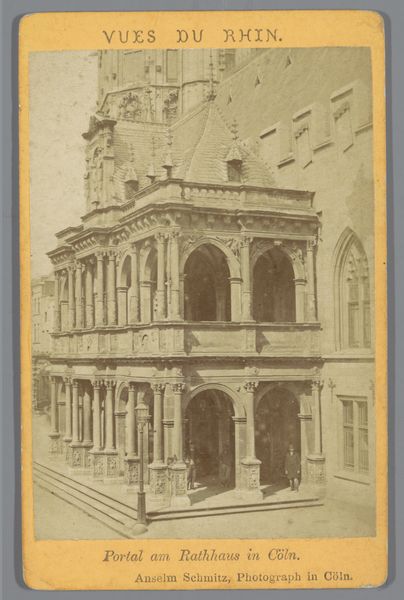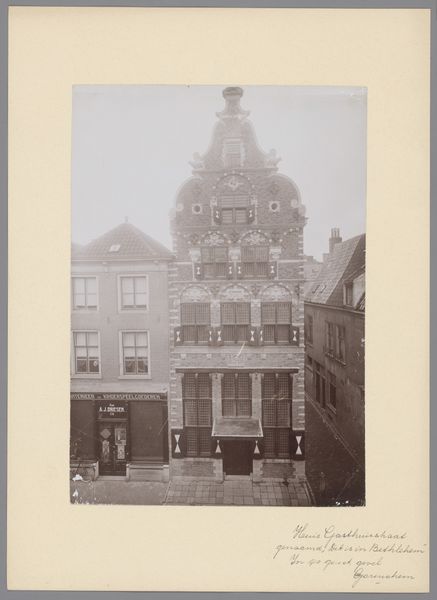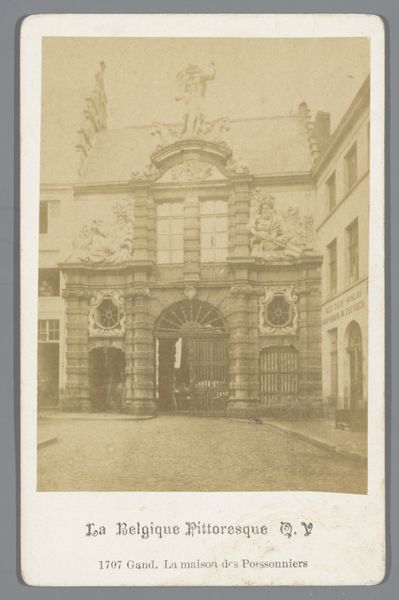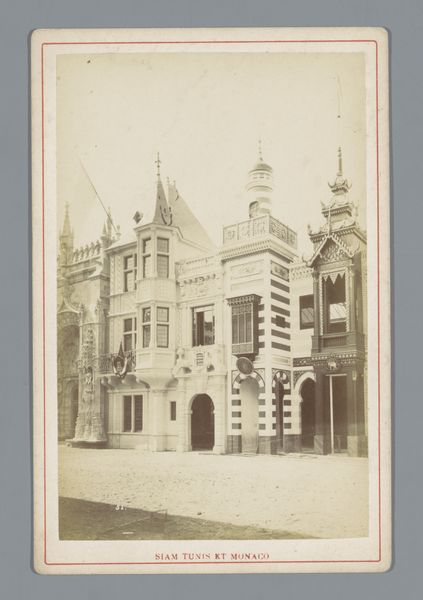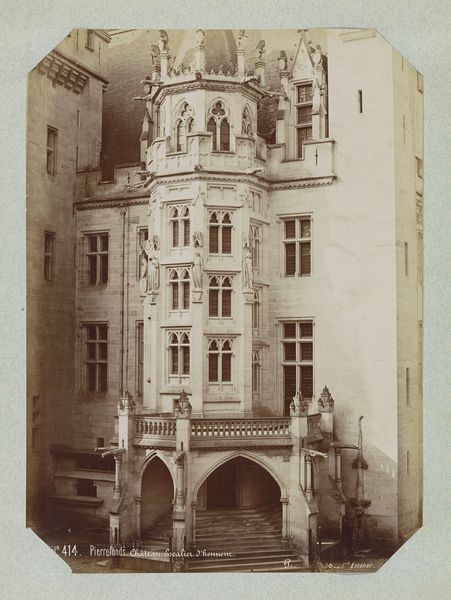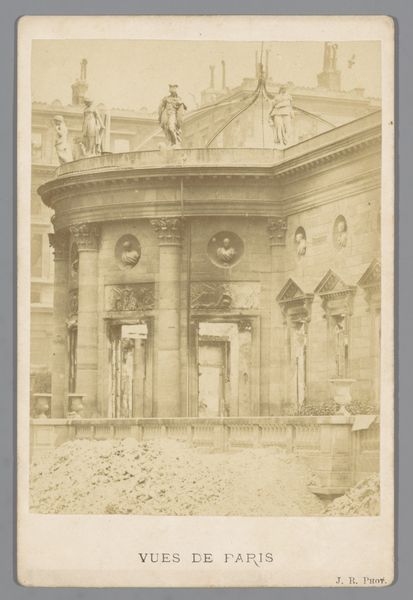
print, bronze, photography
#
portrait
#
statue
# print
#
german-expressionism
#
bronze
#
photography
#
cityscape
#
realism
Dimensions: height 166 mm, width 108 mm
Copyright: Rijks Museum: Open Domain
Curator: Before us we have "Gezicht op het Rolandsbeeld in Bremen" or "View of the Roland Statue in Bremen" by Louis Koch, likely created sometime between 1880 and 1900. Editor: There's a stillness here. The soft sepia tones evoke a bygone era, lending a sense of dignity to the statue. The composition itself feels very centered, drawing the eye directly to the statue as the focal point. Curator: Koch captures more than just the statue; he encapsulates the spirit of Bremen during a time of significant transformation in German society and culture. These Roland statues represent civic rights and freedom, they served as potent symbols within urban spaces like Bremen. Editor: The texture seems key too, wouldn’t you agree? The statue itself looks rough-hewn, in stark contrast to the meticulously detailed facades of the buildings behind it. I also see a juxtaposition of organic form against structured architectural elements. Curator: Yes, and placing this work within a broader historical narrative reveals Bremen’s complex relationship with trade and governance, particularly in the context of its Hanseatic League past, which afforded a certain level of independence. The placement in the market square signals the reach and significance of law into daily life. Editor: It is all about reaching beyond the limitations of mimetic representation through photographic processes. The lines create dynamic movement, making it more expressive. Curator: It’s crucial to understand that access to these forms of civic symbols was not universal during that time period, though, which gives it a sort of ironic tone, right? Photography became increasingly accessible, but we cannot ignore how images often perpetuated specific viewpoints while silencing other narratives. Editor: This piece really gets into some very complicated elements of photography, which I find very satisfying. It draws one's eye in a very thoughtful way. Curator: Absolutely, this examination really opens the door to further thinking. It highlights civic identity as filtered through both the lens of power and that of the burgeoning photographic industry.
Comments
No comments
Be the first to comment and join the conversation on the ultimate creative platform.
